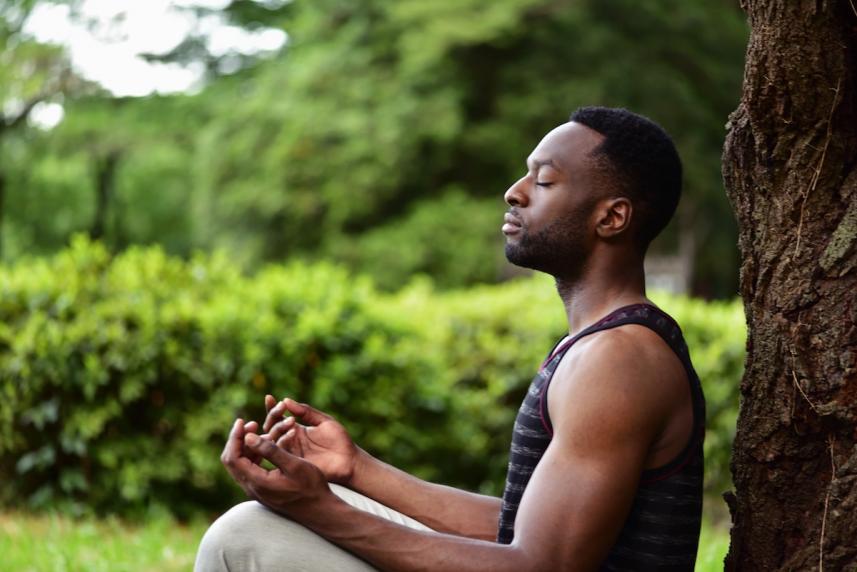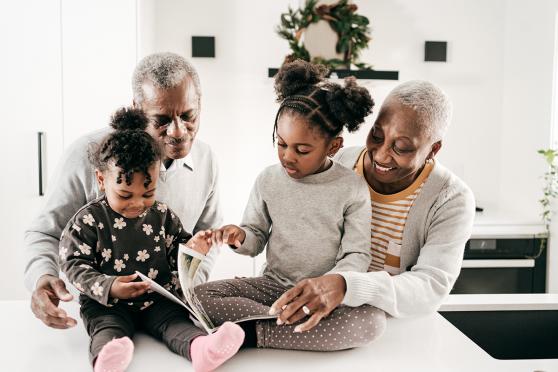The secret power of meditation
Breathe In. Breathe out. And reap the calming benefits of this ancient practice.

In a world spinning too fast, one of the best things you can do for your well-being is to stop for a few minutes. Stop doing. Stop thinking. Stop everything. That’s the basic idea behind mindfulness-based meditation—and the benefits are significant, including for older people.
“Mindfulness has been helpful for older adults, from frail to fit,” says Lucia McBee, LCSW, a mindfulness-based stress-reduction teacher, author, and former clinician to an elder population.
Mindfulness-based meditation is, according to McBee, “the practice of paying attention to the present moment, often using the breath and other physical sensations.” Headspace, one of the most popular meditation sites and apps, defines it as “a formal exercise to cultivate awareness and compassion,” wherein “by sitting with the mind, we’re training it to be more open and at ease, and we consequently discover greater calm, clarity, contentment, and compassion.”
The research is impressive. Studies show that mindful meditation can bring cognitive benefits for aging, memory, attention, and decision-making—as well as improvements in cognitive function for people with Alzheimer’s disease. The practice of meditation has been linked to reducing inflammation, blood pressure, and lower-back pain, and aiding digestion and circulation. Studies have also shown that meditation can improve:
- Sleep
- Anxiety
- Depression
- Overall psychological well-being
Where to Begin
If you’ve never tried it, meditation may sound strange or intimidating. There are many types (such as mindfulness, transcendental, guided imagery, body scanning, and many more). Which is best for the elderly? McBee says it’s difficult to generalize, but her older clients have been most receptive to mindfulness meditation, which is also the “most utilized and well-researched,” having been practiced for more than 2,500 years.
At the start, it helps to follow a guided meditation, in which you listen to calming instructions and music to help you get the hang of it. You can likely try a class at a local senior center or yoga studio. Or, to try it at home, turn to the Headspace app or others (often free, with upgrades available at a cost), including Calm and Insight Timer. There are also numerous YouTube videos and podcasts for beginner-level guided meditation for seniors.
Six Steps to Calm
Meditation can be simpler than you may think. Just follow these six straightforward steps:
- Meditation Step #1: Set aside a few minutes a day at first (more once you’re used to it).
- Meditation Step #2: Wear something comfortable.
- Meditation Step #3: Find a quiet, cozy place to sit: on the floor with a cushion, in a chair, or wherever you feel most at ease.
- Meditation Step #4: Keep your back straight, your neck relaxed, and your hands resting in your lap or on your knees, according to Headspace.
- Meditation Step #5: Close your eyes, focus on breathing, and sit in stillness for as long as possible—that may be 30 seconds the first time, or up to 10 or 15 minutes a day for more advanced practitioners.
- Meditation Step #6: Expect it to be challenging at first. Your mind will likely wander. That’s OK. It doesn’t mean you’re doing it wrong. It means you’re human. Acknowledge the thoughts, but don’t get stuck on them. Watch and feel them pass by, and don’t engage. Return to your breathing. It isn’t easy to develop the critical meditation skill of separating yourself from your own thoughts, but it’s a worthwhile skill to build. And, in time, you will improve.


